What is Gasteria and how to grow it?
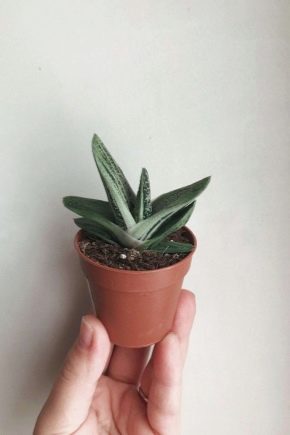
Gasteria is a unique plant that attracts the attention of flower growers and landscape designers. The homeland of the flower is South Africa, the succulent family - Asphodel. The plant got its name due to the resemblance to the stomach in the lower part of the perianth tube. It is worth considering the main characteristics, varieties, as well as methods of growing and caring for the crop.
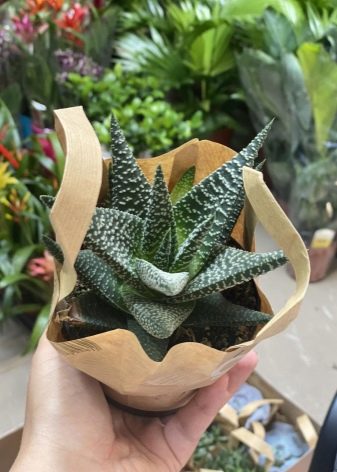
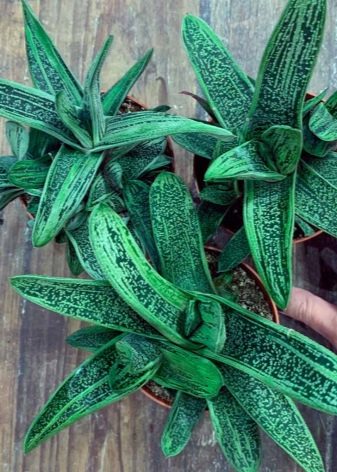
general description
Gasteria today has filled almost the entire planet, meeting both in Africa and in Central Asia, and even in the northern regions. The succulent plant demonstrates excellent resistance to temperature extremes, stands out for its unpretentious care, for which it is appreciated by flower growers.
The appearance of the culture resembles haworthia and aloe, with which this plant is often confused. And this is not surprising, because both species also belong to the Asphodelic family. Among the main characteristics of the plant:
- shortened stem;
- hard foliage of medium size, spiral-shaped and dark green in color with a characteristic pattern of spots or stripes;
- long peduncles (up to 40-100 cm);
- buds of yellow, green or orange shades.
Leaves of standard varieties of gasteria have a slightly rough surface, the maximum length of one plate reaches 25 cm. Succulent blooms mainly in the spring-summer period.
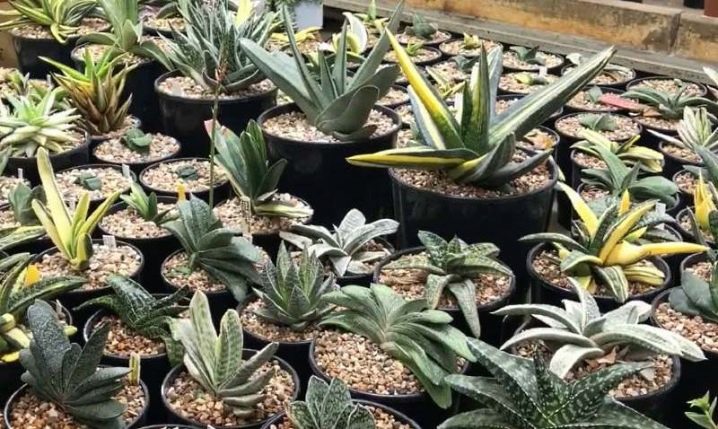
Types and varieties
At the moment, more than 70 varieties of gastria are known, and this is due to the breeding or independent formation of hybrids. For growing at home, there are about 20 species that do not require special care. Common subspecies of the popular plant include the following options.
- Gasteria Armstrong... It is a fairly compact succulent with wrinkled leaves. The plates have a marsh color and are placed in two rows, the maximum length of each does not exceed 10 cm. During the flowering period, the flower produces medium-sized buds of a rich orange or reddish color.
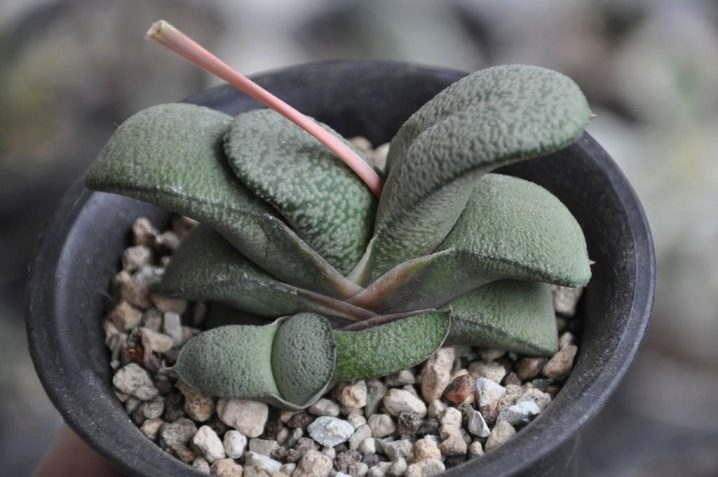
- Warty... The flower got its name for the unusual appearance of rough leaves, slightly pointed towards the end. Each plate is covered with small white warts, which looks unusual. The flowers are pink and red, the petals are covered with green spots.
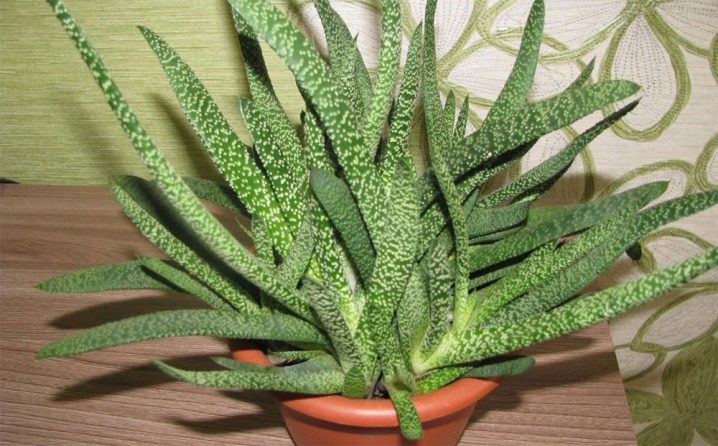
- Keeled... The peculiarity of the plant lies in the non-standard arrangement of the foliage. The plates go in a spiral, and each is equipped with a sharp keel, for which the succulent got its name. The surface of the leaves of gasteria is decorated with small warts, and there is a light edging along the edges.
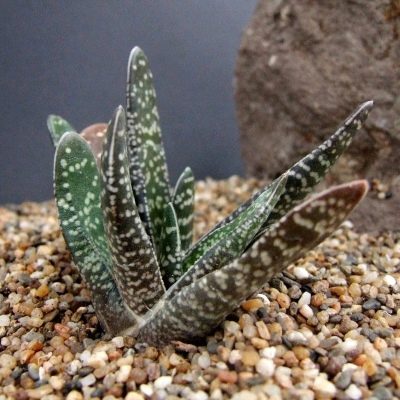
- Spotted... It is not hard to guess how the name for the flower was coined. A distinctive characteristic of the species is a mottled pattern on the surface of green leaf plates, smooth and fleshy to the touch. The flowering culture is accompanied by the release of red flowers.
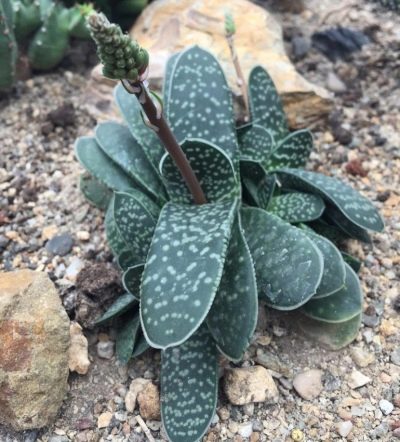
- Dwarf... It is the most compact subspecies, which is outwardly completely identical to the species of spotted gastria, only in the form of a reduced copy. An adult plant produces dark green leafy plates with characteristic specks on the surface. The flowers of the variety are pink.
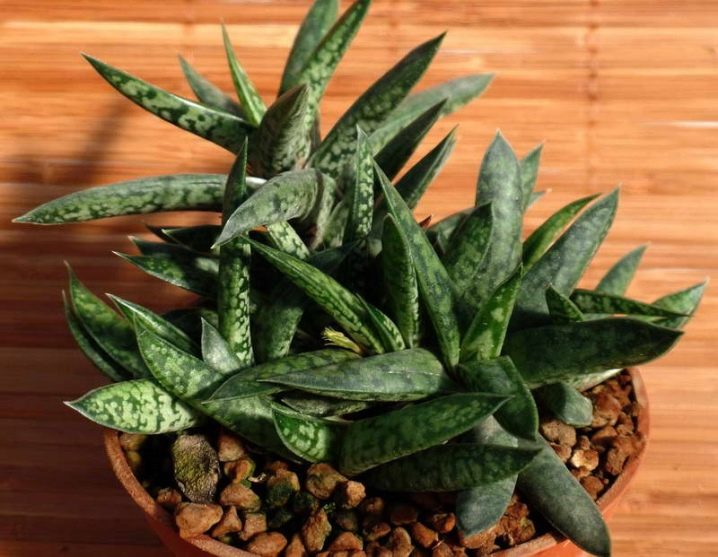
- Gasteria Batesiana... A special species with dark green leaves, whose length reaches 18 cm. Among the characteristics of the plates, it is worth highlighting the lanceolate shape with a slight sharpening towards the end and a smooth surface.The light-colored bumps on the surface give the culture an attractive look. The variety forms orange and pink buds up to 4 cm long by spring.
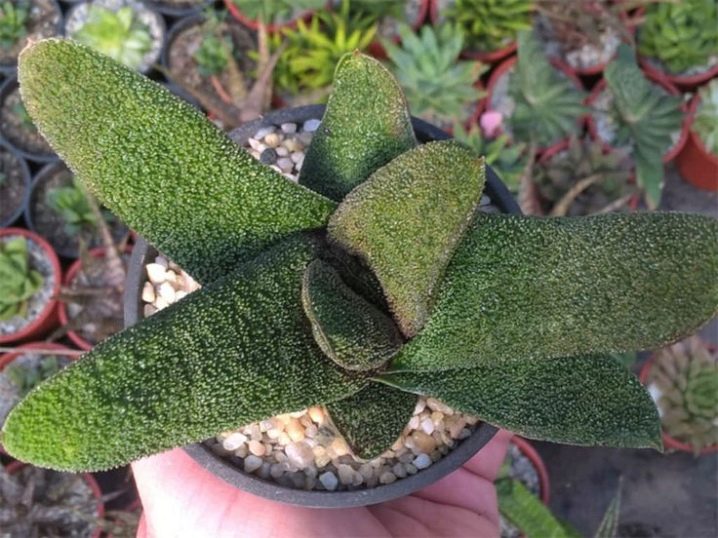
- Saber-like. The difference between this species and others lies in the absence of a stem. The leaves form a rosette immediately after the succulent shoots, the length of each plate exceeds 30 cm, and the width reaches 7 cm. The flowering period is accompanied by the release of long arrows, inside which are red buds.
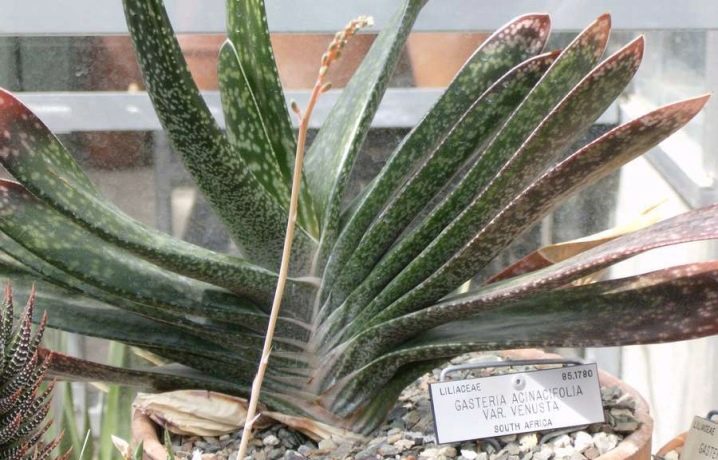
- Bicolor... One of the largest representatives of the species, which is characterized by large leaves and rosettes. The plant forms oval leaf plates, the surface of which is decorated with white specks.
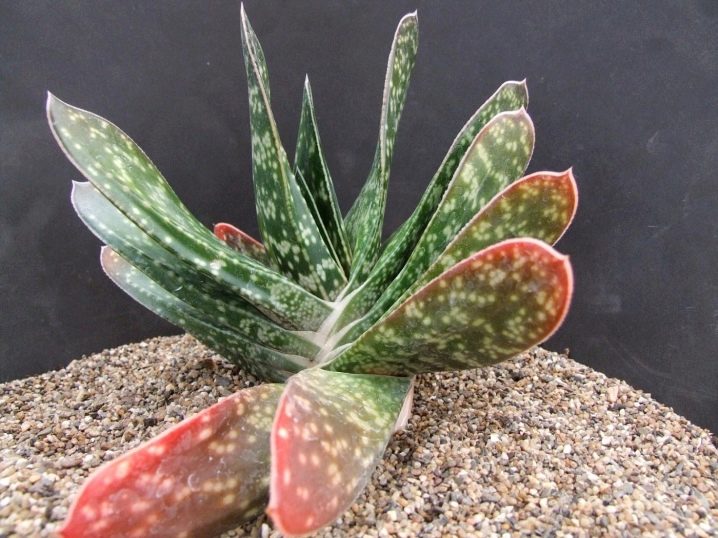
- Soddy. This species also does not have a stem, and the leaves, located almost at the roots, have a dark green tint and small light specks on the surface. The buds of the subspecies are predominantly red.
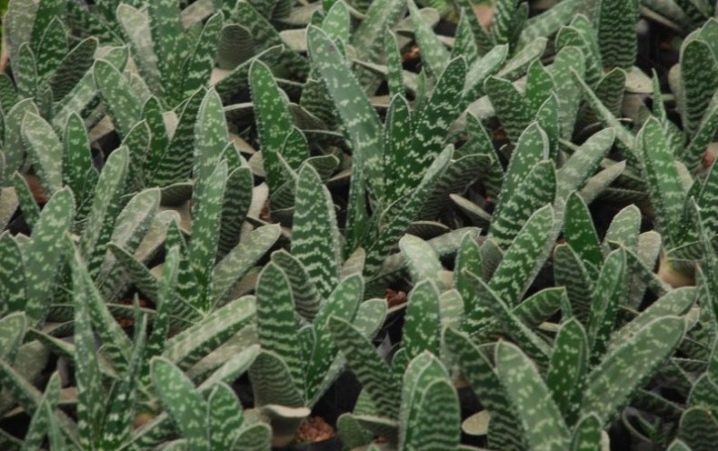
- Whitish... The "highlight" of the culture lies in the wide leaves, which in their shape evoke associations with a sword. The maximum length of the leaf plate is 30 cm, and the width reaches 7 cm. The flowers of the culture are saturated scarlet.
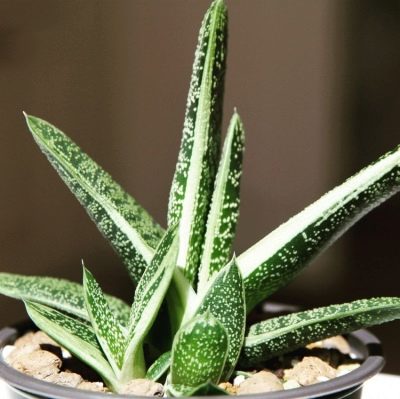
- Marble... A plant with leaves running along the stem in a spiral and forming a pretty large rosette. Among the features, there are silvery spots with which the leaf plate is dotted, which looks rather unusual.
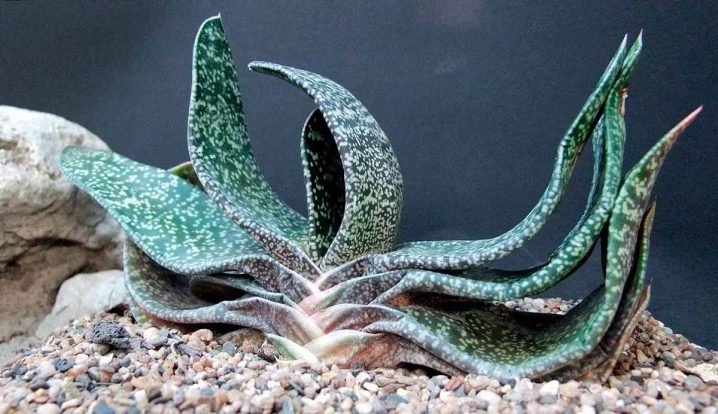
- Triangular... The leaf plate of this subspecies grows up to 20 cm in length. The leaves are pointed towards the end and equipped with a hard sharp thorn to repel pests. During the flowering period, light pink flowers peep out of the inflorescences.
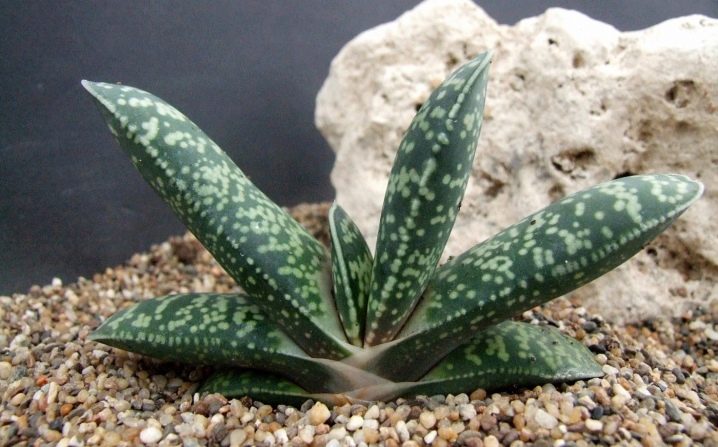
There are other varieties of gasteria, which are popular with both gardeners and landscape designers. So, varieties of pimpled and variegated gastria are known. "Karinata", "Duval", "Little Varti" and others... Therefore, it is not surprising that succulents are now ubiquitous.
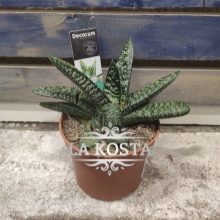
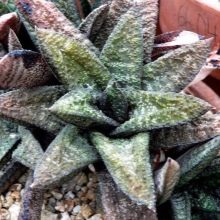
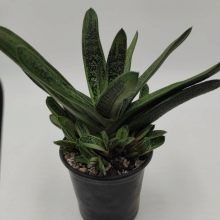
Landing
The planting of Gasteria "Minima" or any other variety can be carried out both in the open field in the southern regions and at home.... This will require a pot, the bottom of which will need to be filled with a layer of drainage and then with fertile soil. The plant is planted with seeds, which must first be selected and soaked in a disinfecting composition. Then it will be possible to strengthen the plant's immunity and accelerate its growth.


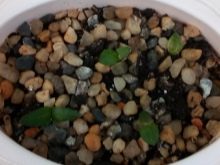
Care
It is possible to achieve quick survival of the planted culture, as well as accelerate its growth, if you take proper care of the plant. To do this, it is worth taking into account a few simple recommendations.
First of all, it is worth taking care of the lighting of the flower variegated "Glomerata", "Flow" or other varieties... Better to put a pot of Gasteria in sunny places where there is diffused light. This is especially true for variegated species that change their color in the sun. At the same time, it is not recommended to place a flower under direct sunlight, otherwise there is a high probability that the plant will simply dry out.
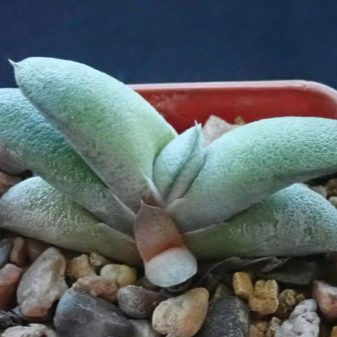
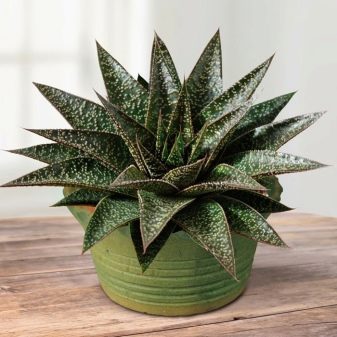
Conditions
At home, it is important to monitor the indoor climate. A succulent plant will feel comfortable at 25 degrees Celsius and standard humidity. In winter, the temperature can be lowered to 10-15 degrees, since the flower is at rest, and such a drop is required for it to lay flower buds for the next season.
Periodically, the room where the pot with Gasteria stands should be ventilateso that rot does not begin to appear in the roots or on the elements of the succulent, which can lead to the death of the culture. Also, regular airing of the room will accelerate growth and provide a more lush flowering culture.
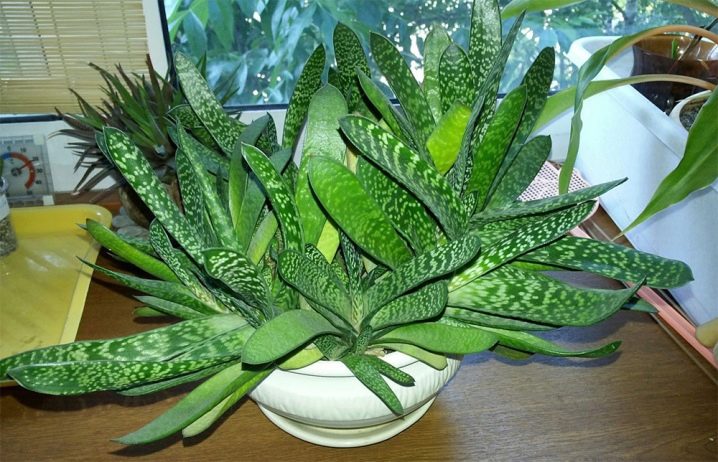
Watering
Gasteria grows mainly in deserts, so it does not require too much watering. Usually the plant is watered 3-4 times a month, adding a small amount of water and making sure that the soil is not dry. If you overdo it with the volume of liquid, there is a high probability of root rot, which will lead to the death of the flower.
In winter, flower growers recommend reducing watering to 1-2 times a month. This flower will be enough to make you feel comfortable. It is better to apply water under the root, and not from above, as inexperienced plant lovers do.
Many are interested in whether it is necessary to spray the foliage. This is not necessary, especially during the heating season. It is enough to place several containers of water around the pots or use a humidifier.
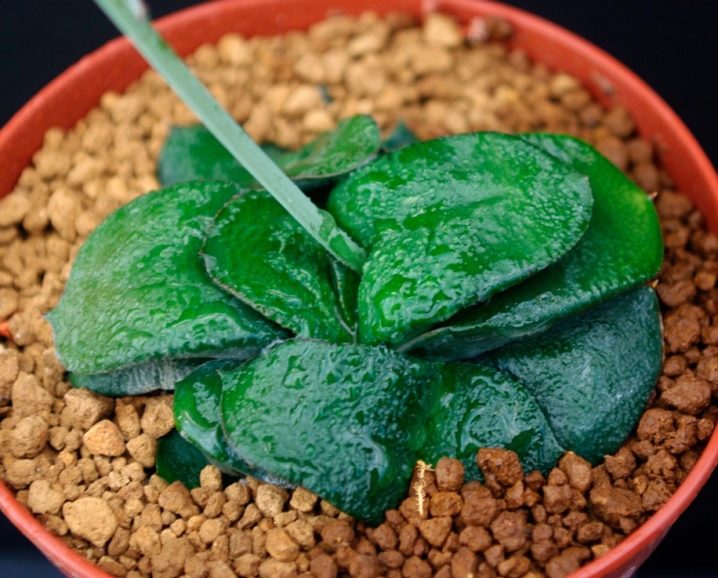
Top dressing
Gasteria mainly feeds on inorganic fertilizers. Therefore, they use formulations containing nitrogen or phosphorus. However, when choosing a complex, it is worth considering the quality of the substances included in the composition, since the well-being of the culture depends on this.
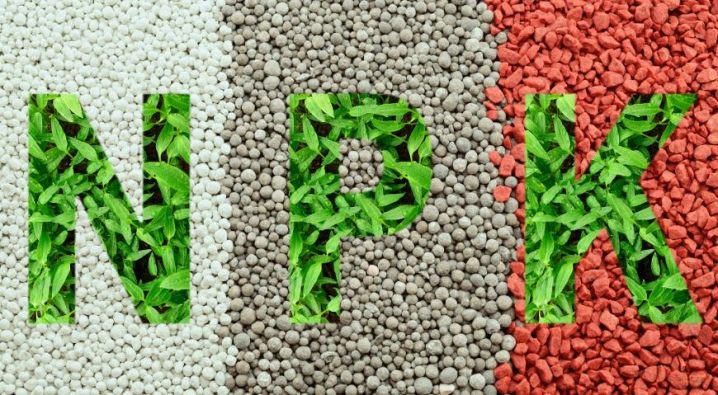
Reproduction methods
There are several options for how gastria can be propagated. Among the common ones:
- processes;
- seeds;
- leaves.
If you organize competent care of the plant, it will form daughter outlets, which can then be transplanted to a new place and grow a small succulent. To carry out the breeding procedure, you will need:
- carefully separate the formed process from the mother flower and leave the roots to dry;
- transplant it into a prepared container filled with fertile soil;
- pour a little.
It is not necessary to cover the container with transparent material, otherwise the plant will rot without ever getting out of the ground.
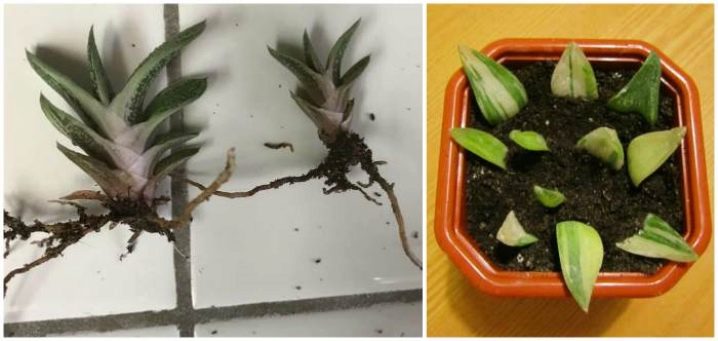
The seed method is a little more complicated and takes more time. To get the result, you will need to pollinate the flowers with the help of insects or independently by knocking on the stem of the peduncle. Also, pollination is performed using a simple brush, which is carried out over all flowers, thus distributing the pollen. On average, seeds are formed within 3 months. The sequence of actions for reproduction of culture:
- ready seeds are selected, leaving large and whole samples;
- placed in a solution of potassium permanganate for disinfection;
- dry and at the same time prepare a pot with a suitable soil mixture;
- planted in a container, covered with earth and watered;
- cover with transparent material.
Periodically, it is recommended to ventilate and spray the sprouts to prevent the development of rot and accelerate the growth of the succulent.
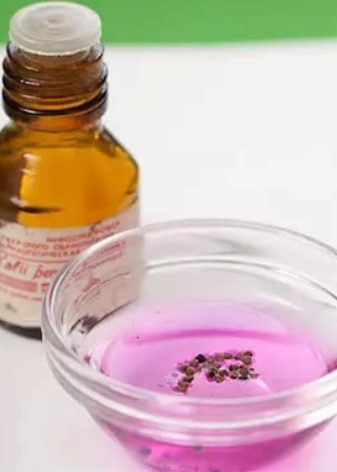
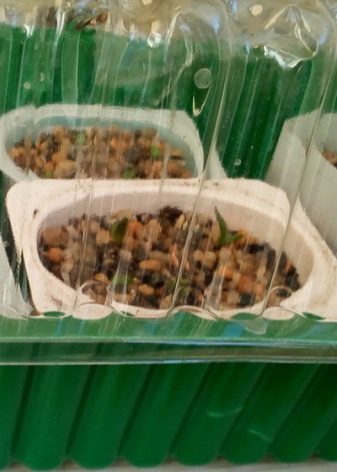
The last method is reproduction using a leaf fragment. In this case, part of the leaf plate in a vertical position is buried in fertile and fertilized soil by 1-2 cm, leaving a little more than half at the top. The disadvantage of this technique is that it takes quite a long time to wait for the leaf to sprout.

Diseases and pests
Gasteria has a fairly strong immunity, but this does not mean that the culture is not attacked by insects and is not affected by diseases. Common pests include the following parasites.
- Aphid... Albeit rare, but one of the most disgusting phenomena, from which it is rather difficult to get rid of.
- Shield... You can detect the presence of an insect by the light spots that appear on the leaf plates.
- Mealybug... In this case, the leaves are covered with pest secretions that have a waxy bloom.
- Spider mite. You can see him on a thin and white web.
Get rid of insects will help insecticides... However, before using the drug, it is recommended to carefully read the instructions so as not to harm the culture. The most difficult struggle will be with the spider mite, since in this case it is necessary to resort to the help of more advanced drugs - acaricides.
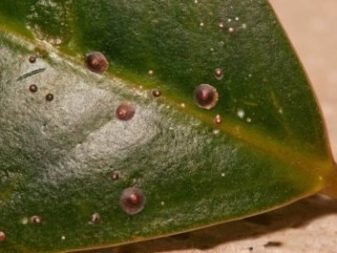
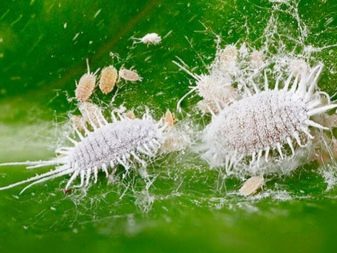
As for diseases, florists distinguish the following ailments.
- Rot... It is formed mainly due to the overflow of the plant. Dry spots of brown shades will help to detect gray rot. To prevent the development of the disease, it is worth adjusting the watering and removing the affected areas.If the rot has made its way too far, it is advisable to carefully remove the flower from the pot and clean it of the lesions.
- Fungi and infections. Mostly they appear where the plant can be cold. The disease develops rather slowly and is almost invisible in the early stages. However, as soon as the heat sets in or the temperature rises slightly, the plant will begin to die.
- Burns... An excess of the sun leads to such consequences. To prevent such situations from happening, you should rearrange the pot with Gasteria away from direct sunlight. It is better to choose areas where there is diffused light.
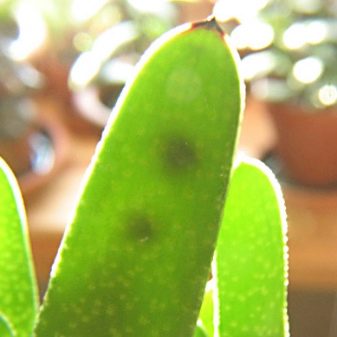
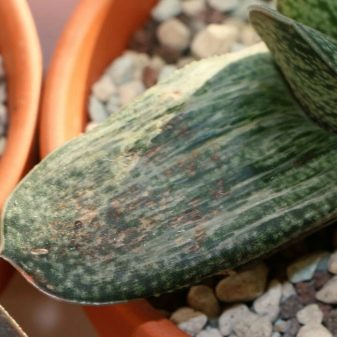
It is not difficult to grow Gasteria, regardless of the plant variety. One has only to first study the necessary information about the plant and take care of the competent construction of caring for it.























































The comment was sent successfully.